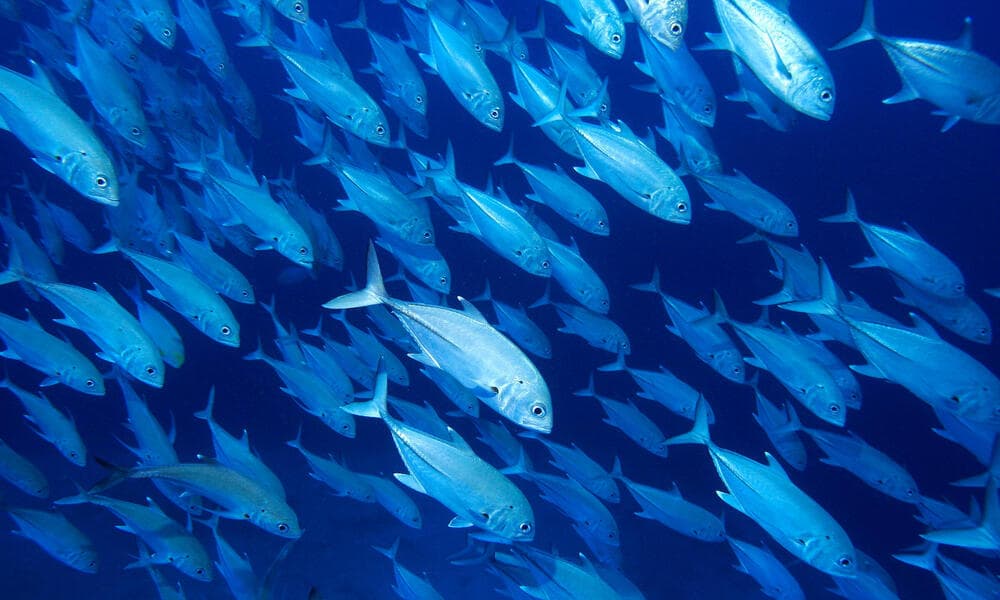The vitality of the ocean’s ecosystem is intrinsically linked to the abundance and distribution of fish. Their numbers serve as a barometer for the health of marine environments, necessitating accurate population estimates for the sustainable governance of global fisheries.
The Significance of Oceanic Fish Populations
Fish are pivotal not only to the ocean’s ecological balance but also to the global economy, providing sustenance, employment, and income through both commercial and recreational fishing. Their role in the marine food web underscores the critical need for precise quantification of fish populations for ecological sustainability.
The Intricacies of Estimating Fish Numbers
Efforts to gauge the global fish population face significant hurdles, given the dynamic nature of the ocean and its inhabitants. Accurate assessments are crucial for managing fishing practices and safeguarding against overexploitation, which threatens marine biodiversity.
Methods of Population Estimation
Advancements in technology have enhanced the precision of population estimates, employing methods such as:
- Acoustic Surveys: Utilizing sonar to map fish distributions through sound wave reflections;
- Netting: Sampling populations in specific areas to extrapolate broader population metrics;
- Tagging and Tracking: Marking fish with electronic or visible tags to monitor movements and estimate population sizes;
- Surveys: Employing underwater cameras or divers for direct observation and counting;
- Mathematical Models: Integrating data from various sources to predict population trends and inform management strategies.
Obstacles in Population Estimation
Despite technological progress, several challenges persist, including limited data coverage due to the ocean’s vastness and the elusive nature of many fish species. Environmental variability further complicates the accurate prediction of fish populations.
Continued Research and Monitoring
Ongoing efforts to refine and expand fish population data are essential for the sustainable management of marine resources. These endeavors are critical for devising effective conservation strategies and adapting to the impacts of climate change on marine life.
Comparative Table: Techniques for Estimating Fish Populations
| Method | Description | Advantages | Limitations |
|---|---|---|---|
| Acoustic Surveys | Use of sound waves to detect fish | Covers large areas efficiently | May not accurately count non-sonar-reflective species |
| Netting | Sampling with fishing nets | Direct measurement of populations | Can be invasive and disruptive |
| Tagging and Tracking | Attaching tags to monitor fish movements | Provides detailed behavioral data | Labor-intensive and costly |
| Surveys | Visual counting through cameras or divers | Accurate for observed areas | Limited to accessible regions and clear conditions |
| Mathematical Models | Predictive analysis based on various data sources | Can incorporate environmental factors | Dependent on the accuracy of input data |
Key Points on Oceanic Fish Population Estimation
- Importance: Essential for sustainable marine management and conservation efforts;
- Challenges: Vastness of the ocean, species diversity, and environmental variability;
- Technological Advancements: Enhancing accuracy and scope of population estimates;
- Continuous Need for Research: Vital for adapting to ecological changes and ensuring the sustainability of fish populations.
Sustainable Fishing Practices: A Key to Preserving Oceanic Fish Populations
In the quest to understand and manage the vast number of fish within our oceans, sustainable fishing practices emerge as a crucial element. These methods are designed to minimize environmental impact, preserve fish populations for future generations, and maintain the health of marine ecosystems. Implementing sustainable practices involves a multifaceted approach, including:
- Selective Fishing Gear: Utilizing fishing gear designed to reduce bycatch, such as non-entangling nets and longlines, helps protect non-target species and juvenile fish, ensuring the long-term viability of fish stocks;
- Catch Limits and Quotas: Establishing scientifically informed catch limits prevents overfishing, allowing fish populations to replenish and thrive. Quotas should be rigorously monitored and enforced to ensure compliance;
- Marine Protected Areas (MPAs): Designating areas where fishing is restricted or prohibited can protect habitats critical to the lifecycle of many marine species, such as spawning and nursery grounds. MPAs serve as biodiversity hotspots, aiding in the recovery of endangered species;
- Eco-labeling and Consumer Awareness: Programs that certify sustainably caught seafood empower consumers to make informed choices, driving market demand towards responsible fishing operations. Awareness campaigns can further educate the public on the importance of sustainable seafood;
- International Cooperation: Many fish populations migrate across national boundaries, necessitating global collaboration to manage these resources effectively. International agreements and organizations play a pivotal role in coordinating conservation efforts and establishing universal standards for sustainable fishing.
Video Guide
To answer all your questions, we have prepared a video for you. Enjoy watching it!
Conclusion
Estimating the number of fish in the ocean is a complex yet vital task for the preservation of marine ecosystems and the sustainable exploitation of its resources. Through continuous research and the development of innovative methodologies, scientists strive to improve our understanding of marine populations, ensuring the long-term health and diversity of ocean life.



